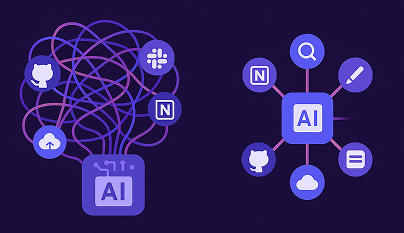.png)
Consumption Quota Management - The Know How's
In managing API consumption quotas effectively, we've encountered and implemented several best practices in the Lunar system to proactively handle API quotas. Here are the top recommendations
The landscape for API quota management is still developing. Despite some API providers offering visibility into quota usage through dedicated dashboards—such as API-first companies like OpenAI or Okta — most vendors only provide this information on monthly billing statements. This lack of real-time insight and control can lead to inefficiencies and unexpected costs. Moreover, the task of manually checking each control panel for your various third-party APIs is both exhausting and impractical.
Simply having visibility is not enough; proactive management is essential to ensure smooth operations and avoid disruptions. In this blog post, we'll explore the types of API quotas vendors typically provide and share best practices for tracking and actively managing your external API quotas effectively.
Recap: The types of API quotas out there
The API economy is vast, encompassing a myriad of business offerings that necessitate various API quotas to manage and control usage effectively. Here are some of the main types of API quotas vendors provide:
- Daily/Monthly Quotas:
Restricts the total number of requests a user can make within a day or month.
- User-Based Quotas:
Often identified by an API key or user ID, applying quotas on a per-user basis.
- Bandwidth Quotas:
Limits based on the amount of data transferred (e.g., megabytes or gigabytes) via the API.
- Token Quota:
Relevant for LLM (Large Language Model) APIs, limiting the number of tokens used in a timeframe based on the prompt size.
- Per-Application Limits:
Sets quotas based on the application making the API requests, commonly used in multi-tenant environments.
- Per-IP Limits:
Restricts the number of requests from a specific IP address within a given timeframe.
In addition to these fixed quotas, which allocate a specific resource within a given timeframe, there is the crucial aspect of rate limiting. Rate limiting encompasses:
- Requests per Minute/Second/Hour:
Limits the number of requests a user can make within a specified time period, preventing abuse and ensuring fair usage.
- Concurrent Requests:
Limits the number of simultaneous requests a user can make, helping to manage load and maintain performance.
Simple Tips for Managing API Consumption Quotas
In managing API consumption quotas effectively, we've encountered and implemented several best practices in the Lunar system to proactively handle API quotas. Here are the top recommendations:
- Centralized Visibility Over Quota Usage
Implement a centralized dashboard that aggregates quota usage across all your APIs. This unified view reduces the hassle of logging into multiple control panels and provides a holistic perspective.
A more advanced approach involves viewing the quota usage granularity across different environments, tenants, or applications. This detailed insight helps in pinpointing specific areas where quota consumption might need closer monitoring or adjustment.
- Define a Hard Limit and Soft Limit
Set alerts according to soft limits to get early warnings before hitting the hard limits. This proactive approach allows time to make necessary adjustments.
Define specific actions to take when limits are reached. For example, if an API provider allows overages, decide how to manage these to avoid surprise billing at the end of the period. This might include limiting further consumption or switching to a backup API.
- Define Consumption Strategy According to the Quota Consumed
Priority Queue: Prioritize API calls based on customer importance or other criteria when remaining quota needs to be managed more granularly.
Spreading Calls Across Time: Even out peaks of traffic by spreading API calls across time or scheduling non-urgent calls during cool-off times like weekends.
Preventing Over Consumption: Implement strategy-based throttling by generating 429 responses (indicating too many requests) when limits are approached, allowing API calls only in the next quota window.
- Dividing Quota into Sub-Quotas
By dividing the quota into sub-quotas, you can control consumption more effectively per tenant, service, or environment. This can be achieved by generating ephemeral API keys from the original keys and distributing them to consumers. This method provides granular control and helps in preventing any single consumer from exhausting the entire quota.
.png)
- Load Balancing and Failover
Define a logic to make API calls to alternative services when reaching a quota consumption threshold. For instance, allocate 80% of the token quota to OpenAI's ChatGPT-4, and then direct the remaining traffic to the HuggingFace API. This ensures continuity of service without breaching quota limits.
- Usage Forecasting
Track quota and consumption patterns over time to observe usage trends. This data allows you to forecast when quotas might be hit and predict expected billing at the end of the period. Understanding these patterns enables more accurate planning and budgeting, helping to avoid unexpected costs and service interruptions.
Conclusions
By following these best practices, organizations can manage their API quotas proactively, ensuring smooth operations, avoiding unexpected costs, and optimizing the usage of their API resources. Proactive quota management is not just about avoiding penalties; it's about optimizing resource usage and ensuring the smooth operation of your applications.
Ready to Start your journey?
Manage a single service and unlock API management at scale






